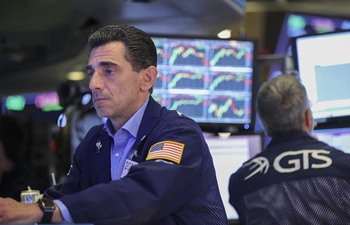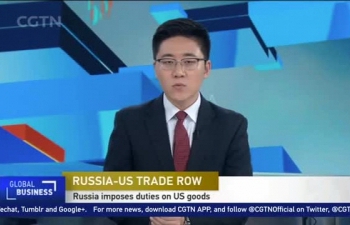By Xinhua writer Xia Lin
NEW YORK, July 7 (Xinhua) -- It sent chills down the spines of other Chinese bakery owners when Fay Da Bakery closed its flagship shop on Centre Street in New York City last week due to rising rent and local tax.
The shop was established in downtown Manhattan in 1991 by Zhou Hanjie to support his immigrant family. His business had expanded to include 12 more chain branches in Greater New York, which collectively took the brand to a leading position over its Chinese peers.
However, 27 years later, the oldest outlet is no longer there. "I am trying to find another location nearby. This is the start-up land for Fay Da. We are not giving up," Zhou told local media recently.
LOCATION EQUALS COST
Rent and local tax, always kept confidential, delivered serious impacts on the daily operation of bakeries, which are conventionally deemed as small business with fundamental tilts toward location and bakers' knacks. Other skeletons in the closet that are vexing bakery runners range from the scarce of qualified bakers to rising salary demand from staff.
Taipan is a Chinese bakery that serves New York Chinatown and Queens Flushing areas with a focus on single-serving buns and pastries. Its chairman Wu Zhihui told Mandarin daily newspaper World Journal that "Chinese bakeries are facing common challenges."
"The best location asks for rent and local tax the most exorbitant," said Wu, adding that the rent cost for Taipan has surged over 50 percent in recent years, forcing him to raise bread and cake prices over and over again, by narrow margins each time in fear of losing customers.
Fay Da has a branch in Woodside, Queens. Two blocks away, the chain-operated Rainbow Bakery also has an outlet, right beside the Roosevelt Avenue. Its clerks and the baker are of Chinese descent.
Neighborhood residents like to queue up inside its cramped space before 7:00 p.m. to buy the bread and cakes baked in the morning at a discount price. They have noticed a change recently: one U.S. dollar for two was "gentrified" to two dollars for three.
"They're trying to stay afloat. It's not easy to maintain a business here," said a woman in the line, which has tapered off in the days trailing the price hike.
Wu noted the inherent factors behind price lifts: hourly pay for an average clerk has risen to 15 dollars; with each hour overtime come 1.5 dollars as additional perk.
Meanwhile, young bakers are increasingly hard to find - it is a profession demanding years of apprenticeship and hours of sweaty work in searing environment each early morning, he said.
"People tend to make easy and quick silver," added Wu.
ONLINE GIMMICKS AND STAR GLAMOR
Typing in "Chinese bakeries in New York" on Google, you can find 6,840,000 results. These bakeries have become an irreplaceable link in the food supply chain in this behemoth city, where around 500,000 Chinese Americans make up about six percent of the total population.
Chinese bakeries originated in Big Apple in the 1970s, when the employers at mushrooming garment factories liked to order bread and cakes for their laborers as "afternoon tea." On Saturday, just one order could fetch 5,000 to 6,000 meals, Zhou was quoted by World Journal as saying.
As New York was urbanized, apparel mills vanished, but Chinese bakeries survived and even flourished, providing staples and coffee of breakfast and lunch for millions of New Yorkers.
Today's New York is the most densely populated city in the United States, with an estimated population of 8,622,698 in 2017. A global power city, it has been described as the cultural, financial and media capital of the world and exerts a significant impact on commerce, entertainment, research, technology, education, politics, tourism, and sports.
There is a lot of money to be made here, but it is harder to make it as fierce competition always forces a business operator to the edge and all costs pile up before a profit turns in.
Against tougher situation, one has to update his solution. Bake Culture from China's Taiwan inaugurated two shops in Manhattan and Flushing this February, each time inviting A-list actors from the island to attract young consumers, build up word of mouth and help highlight the brand.
Fay Da has also debuted online service, where one can order cakes tailored to his specific demands like size, taste and ingredient choice. Web power has greatly fueled personalized supply.
Similarly, Taipan has invested a lot to upgrade its website in a bi-lingual pattern, with fancy cues and pictures to foment surfers' appetite for more of its products.
"Your one-stop bakery for your morning cravings," reads one of its glistening headline photos.
"With the facelift, we are targeting the younger generations," Wu told World Journal.













